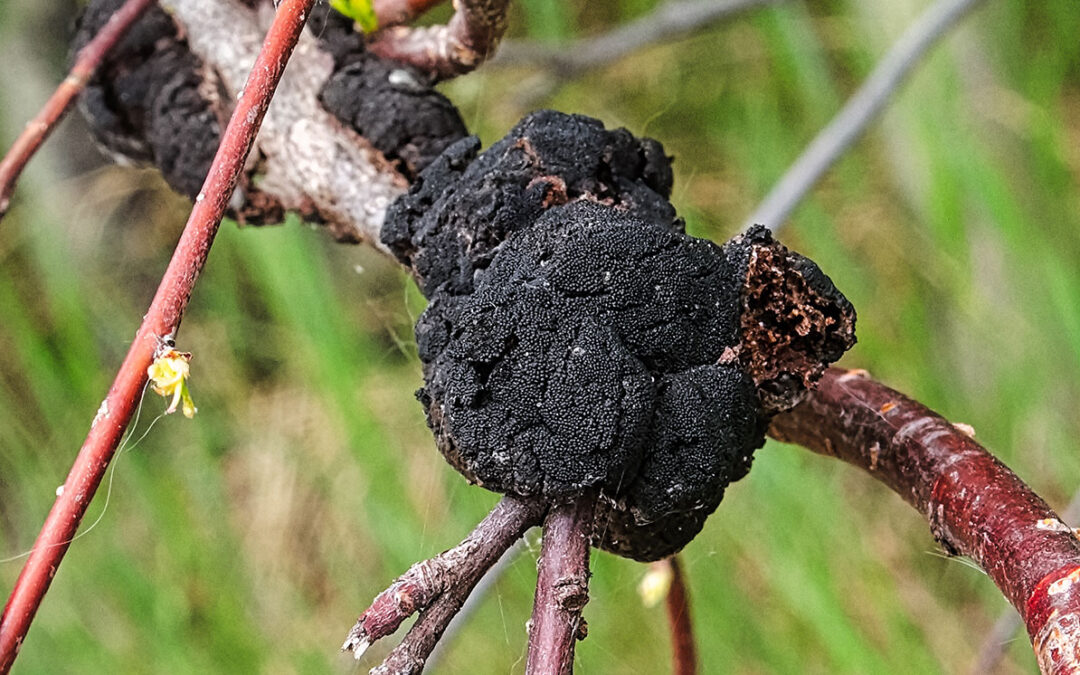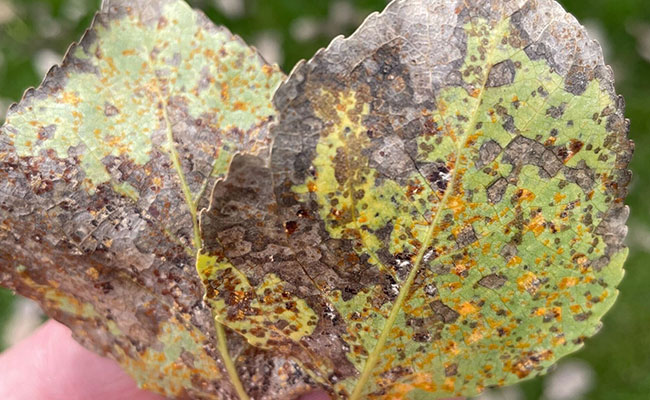Ross Tree has seen rare tree diseases and insects over the last two years because of our wet spring and summer. In 2023, May was particularly wet. All these fungi weaken trees, making them more susceptible to other damaging diseases or pests. In the summer of 2024, Denver had late afternoon rain showers and cool nights, perfect for fungi-growing conditions. Our fungus list is growing.
Cottonwood and Aspen Tree Spot Fungi
Denver homeowners may notice discolored leaves with spots on their Aspen and Cottonwood trees in August and September this year. Septoria and Marssonina Leaf Spot are the culprits, and they grow and spread when the Denver area experiences afternoon storms and cool nights like we had this summer and fall. Fungal spores are released when the infected leaves come into contact with water, allowing them to spread to other parts of the tree or adjacent trees. Highly affected trees will drop their leaves to conserve energy. Fortunately, the damage caused by these fungi is primarily cosmetic, and the trees will be fine the following growing season. So, there is no reason to call an arborist to treat these fungi.
Marssonina Leaf Spot
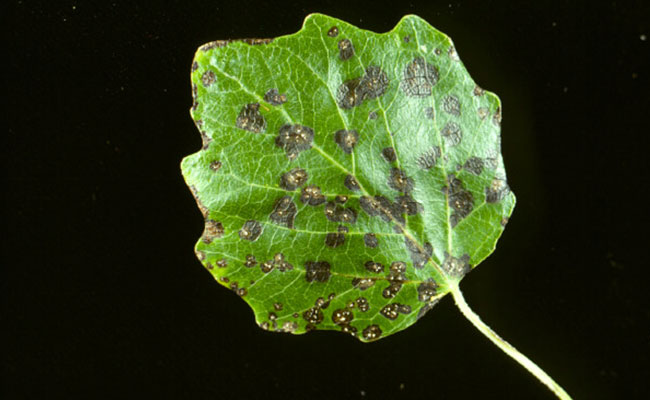
Marssonina Leaf Spot commonly infects Aspens and Cottonwoods in Denver. The spots start as dark brown flecks with yellow halos. New spots characteristically have a white center, while on severely infected leaves, the spots fuse to form large black dead patches later in the summer. Sometimes the Marssonina fungi grow on leaf stalks. The fungus overwinters in fallen leaves infected during the previous summer. When the weather warms, the wind spreads fungus to infect new Aspens and Cottonwoods leaves in the spring. Wet summers support secondary infections that become more visible and cause premature leaf loss on some trees.
Septoria Leaf Spot
The fungus Septoria is commonly found on Cottonwoods growing in cities across Colorado. The appearance of Septoria leaf spots depends on tree species, moisture, and time of year. In early summer, a distinct tan circular spot with black margins and small black fruiting bodies grows on leaves. Late summer infections give the leaves a calico look. Like Marssonina, Septoria survives the winter in fallen infected leaves and spreads by wind once the weather warms in the spring. Early infections do little harm. If moisture conditions are right, secondary infections grow on leaves and spread to other tree sections.
Oak Leaf Blister
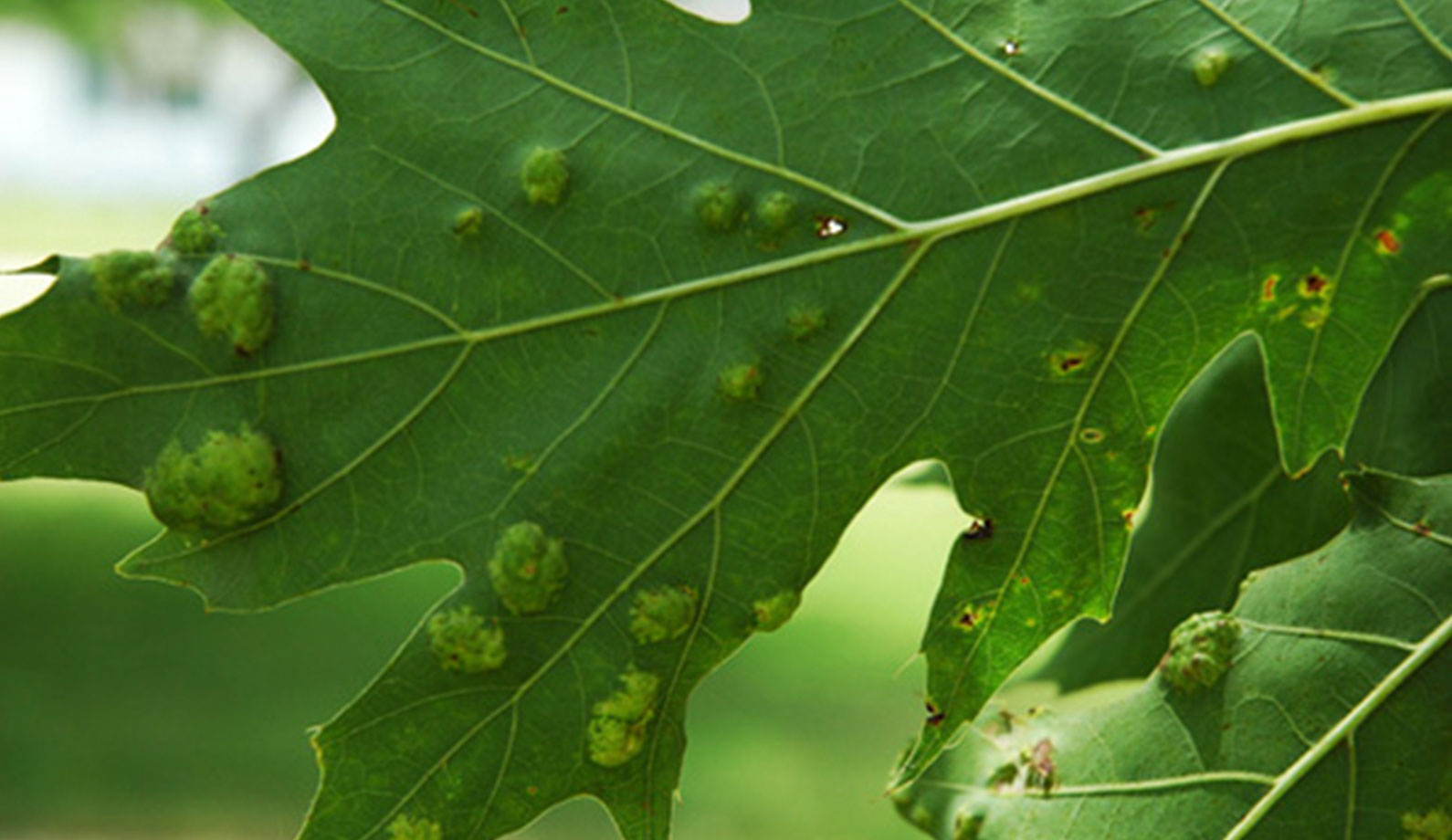
Oak leaf blister is a fungal leaf disease caused by the fungus Taphrina caerulescens. The disease is also called oak leaf curl. The fungus causes circular, raised areas on the upper leaf surface ranging up to 2 inches in diameter with corresponding gray depressions on the lower surface. The surrounding uninfected cells remain normal. Several blisters on individual leaves may cause curling. Large infestations cause oaks to drop their leaves prematurely in late summer or early fall. In Denver this summer, we have had afternoon thunderstorms and cool nights, perfect conditions for the blister to grow and spread. Members of the red oak family are particularly susceptible to this blister. Repeat defoliation can reduce growth and may weaken the oaks, making them susceptible to attack by other organisms.
Life Cycle – During the spring, the spots produce microscopic spores carried by the wind and land onto bud scales and twigs of the same tree or adjacent oaks. They remain dormant until the following growing season. The next spring, rain washes the spores onto young leaves where infection starts and small circular spots begin to develop in 2 to 4 weeks. Hot, dry weather is not favorable for spore germination and slows infestation.
Management Strategies – Oak leaf blister does not seriously affect a tree’s overall health unless successive defoliations occur. Early infections give trees time to generate a second set of leaves when conditions are not conducive to the reinfection. The tree’s natural defenses usually can ward off the fungus. So, keep the Oak trees watered and fertilized during the growing season and dormancy.
- Vigor – Well-watered and fertilized trees can usually resist infection.
- Fungicides – Spring applications when buds are swelling will usually suffice. These products are not effective if applied after bud break.
Anthracnose
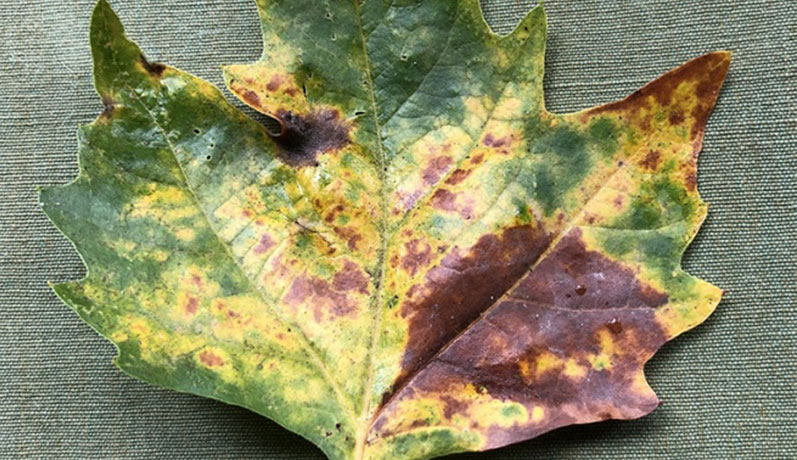
One of our arborists found Anthracnose on Ash trees. The fungus usually attacks Sycamore trees. Anthracnose seldom kills trees but disfigures and weakens them. Anthracnose travels through the vascular system of affected trees attacking buds and twigs leaving behind groups of dead or dying twigs and small branches in its wake. The fungus spreads to other trees by the wind.
Sycamore and Ash trees with Anthracnose sometimes appear to be dying, but with a bit of care can turn around on their own. Affected trees show the following symptoms.
- Defoliation early in the summer.
- Formations of twisted or gnarled branches or twigs witches brooms.
- Formation of black and brown lesions on leaves.
- Sunken cankers on small branches.
How Do You Treatment and Prevention Anthracnose?
Healthy trees usually ward off disease themselves. However, trees are not native to Denver and our arid climate. So it is not surprising that yard trees along the Front Range need a helping hand to fend off harmful diseases and tree insects.
- Watering
A great way to maintain tree health in Denver is winter watering. Denver winters are dry, and without watering many trees become stressed and succumb to fungi like Anthracnose which they could ward off if healthy.
- Pick Up Fallen Leaves
Cleaning up fallen leaves and trigs and disposing of them properly prevents the fungus to spreading to other trees.
- Pruning
Hire a tree company to prune out all infected branches. All tools need to be disinfected before use.
- Fungicides
Call a licensed tree service company to treat large mature trees annually with appropriate fungicides before the tree spurts out new leaves and trigs.
Cedar-apple Rust Fungi
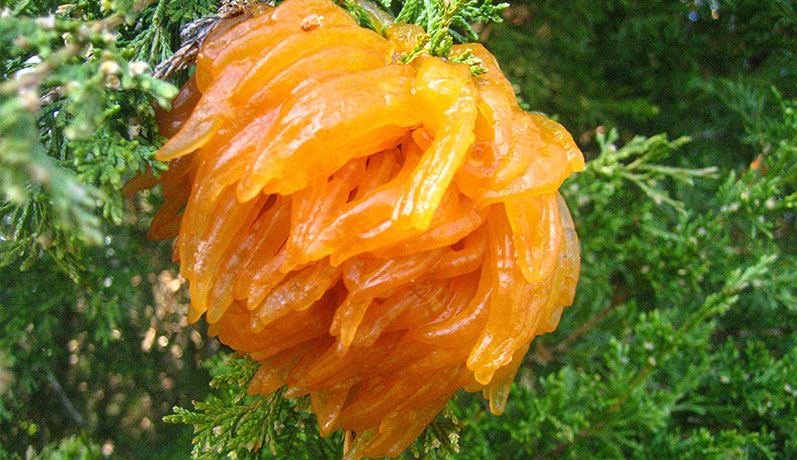
One of the weirdest is the Cedar-apple rust fungi that grow on Junipers. The growth is a gelatinous “squid-like tentacle” resembling Raggedy Ann’s hair. The fungus is a vector organism which means it starts on one plant and then moves to other plants to complete its lifecycle. The strange slimy phase of the fungus is known as the telial stage. The growth is not toxic to humans, but we do not recommend eating it.
Things get interesting when the Juniper fungus releases tiny spores into the air. The wind carries these spores to apples, Crabapples, and Hawthorn trees. The fungus does not threaten the health of the cedar but can prematurely defoliate non-resistant trees in the Rosaceae family. Bright yellow/orange spots with a lighter outer ring form on the leaves of affected trees. The underside of the leaf may show light-colored, cup-shaped structures. Later in the season, black dots appear in the orange spots that eventually grow tube-like structures on the undersurface of the apple leaf, causing infected leaves to drop prematurely. If the affected Apple or Hawthorn trees are drought-stressed, defoliation usually accelerates. Fruit infections are generally near the blossom end and can cause disfiguration. The galls on the Junipers dry up and hang on the tree for several years.
Homeowners with valued Apple, Crabapple, or Hawthorn trees need to consider removing all cedars that are close to these trees because fungicides are not affecting controlling the blooming gelatinous galls. Another method is to prune out the galls on cedars close to value trees, but this might not be practical. Do not plant Hawthorn or Crabapple trees as yard trees if they are near a large population of cedars.
Got a tree disease or fungus problem? Click here to fill out a request service form or call 303-871-9121. We are at your service.

